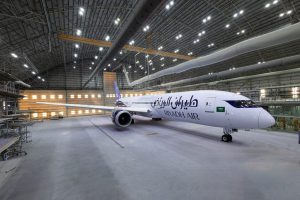Sep 22, 2024
The current GSSA market outlook remains positive and continues with its upwards trend towards 2025. While geopolitical tensions between the Western countries and China continue to impact the Chinese export markets, they have also provided new opportunities to the other Indochina and South Asian countries.
According to IATA, air cargo growth demand recorded a 19.8 percent increase year on year ending July 2024 for the Intra Asia region. The conflicts in Europe and the Middle East also contribute to the disruption of sea freight and rail traffic between Asia and Europe. This creates unexpected demands in air cargo shipments from Asia Pacific and higher airfreight rates.
“WAG had positioned its business approach as a regional GSA company since incorporation in 2013,” Roland Quah, Executive Director of World Alliance GSA (WAG), stated.
“With the present robust regional markets, WAG had capitalised on its operational network, allowing it to benefit from handling regional GSA contracts for United Cargo, Mercury Aircargo, LOT Polish and TCS Worldwide.”
Changing times
Without a doubt, the changing landscape presents airlines with challenges to innovate and digitalise their operations while transforming towards an environmentally sustainable culture. IATA’s guiding principles on digitalisation and sustainability started the digitalisation processes towards AI technologies during the last decade.
“The transformation is still in progress in the industry and as GSA partner, WAG has adopted Corporate Responsibility and Sustainability processes in its work culture. WAG operates on the principles of shared resources in green workspace, IT systems and regional operations,” Quah said.
e-commerce from China continues to be the key driver together with electronic goods leading the high value segments. A trade report suggests e-commerce shipments account for up to 50 percent of China’s airfreight volumes.
“A large number of e-commerce shipments are filtered down towards Indochina and Southeast Asia for transshipment to Middle East, Indian sub-continent and Europe and will continue to grow,” he continued.
The cool chain market is very much a speciality market with fewer players. The traditional perishable market segment continues to form the largest portion of cool chain shipments.
“Pharmaceuticals are catching up, not so on freight volumes but industry revenue value. Major airlines are certified Pharmaceutical cool chain carriers as this segment grows,” Quah added.
Market position
At present, among the greatest concerns for companies in the GSSA space are the ongoing conflicts around the world and geopolitical situation between China and USA. Any serious escalation of hostilities and sanctions may trigger huge disruption to supply chain processes, delivery routes and delivery lead time.
“WAG, having been through couple of tough years during Covid-19, we are more prepared to reset and align ourselves to new challenges,” Quah declared.
“WAG constantly positions itself as a regional GSA capable of managing the interest of our airline partners in Indochina and SE Asia. Vietnam’s export growth potential is as large as China and WAG has the best operating GSA partner in Vietnam.
“We are implementing market entry processes on behalf of TCS Worldwide and exploring new areas of operation. There are also upcoming GSA request for proposal tenders along the way and WAG will be keen to work with new airline partners in the Asia Pacific region. Notably, Vietnam, Thailand and Malaysia are strong growth areas we are targeting. WAG is back and stronger this time.”
The post Onwards and upwards appeared first on Air Cargo Week.
Go to Source
Author: Edward Hardy
Latest Posts






